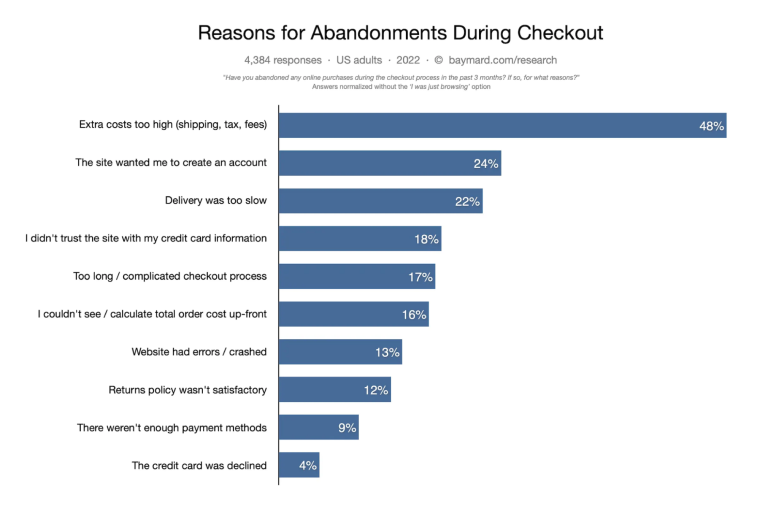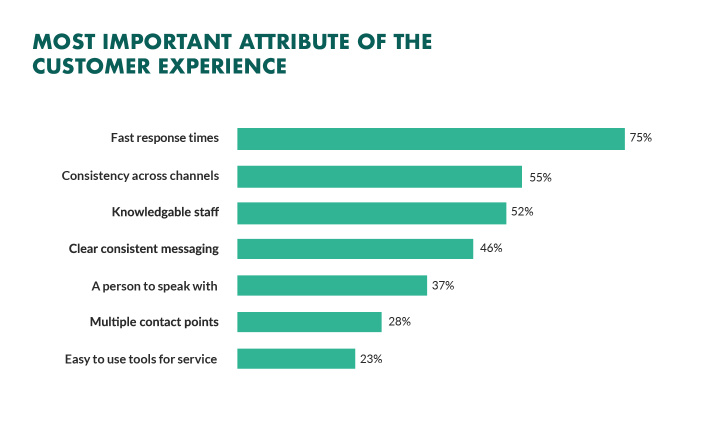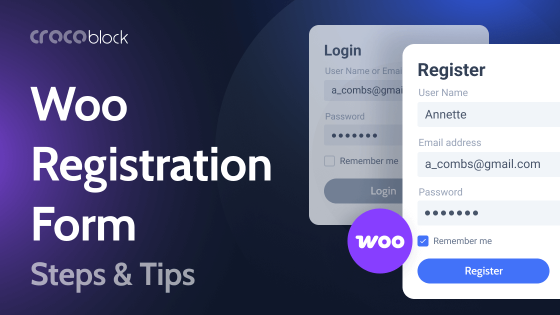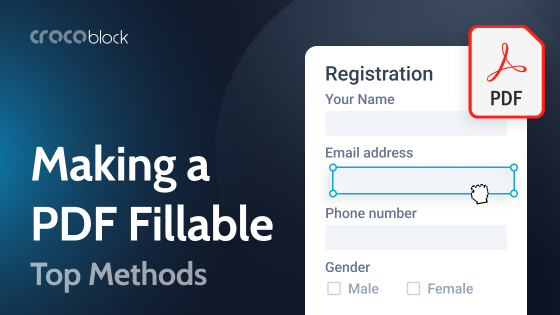During the peak holiday season, your eCommerce store needs to be equipped to handle increased website traffic, seasonal buying behaviors, and stricter customer service expectations. Customer experience (CX) optimization strategies aim to provide your customers with high-quality shopping experiences throughout the stressful (but exciting) holiday season.
There are lots of sale website sites, but this article is exactly for B2C or marketplace owners. It’s never too early to optimize your online store for the holidays. According to Banknote, 11% of consumers start their winter holiday shopping in September, and 18% start in October.
So, if you want to create good customer experiences that boost sales during the holiday season, now’s the time to start. Here are 7 customer experience optimization ideas to help you do it.
Ensure Your Website Can Handle Increased Holiday Traffic
The holiday season generates an influx of website traffic, which is great for business. However, for an unprepared eCommerce site, traffic spikes can cause technical issues, slow speeds, and website crashes.
Prepping your website to handle large volumes of traffic is critical if you want to avoid high bounce rates, low customer satisfaction (CSAT) scores, negative reviews, and lost sales. Here are some speed optimization tips to keep your website running smoothly.
Prioritize page loading speeds
You already know the score – the longer your pages take to load, the higher your bounce rates are going to be. In fact, your bounce rate increases by around 32% as page load time jumps from 1s to 3s. On the flip side, a website with a 1-second loading time can drive 2.5x more eCommerce conversions than a website with a 5-second loading time.
There are plenty of WordPress speed optimization plugins to choose from, all of which serve to increase your website’s load speeds. With both free and premium options available, you’re guaranteed to find a workable solution for your website.
Avoid making big website changes
To ensure your website performs optimally during peak-traffic seasons, you’ll want to avoid making big design changes in the weeks leading up to it. This lessens the risk of unforeseen problems causing technical or speed issues.
Review your plugins
Plugins are invaluable to CX optimization because they help you create more intuitive and convenient customer experiences. However, they can also significantly slow down your website. In the run-up to the holiday season, review your plugins and delete any that you no longer need.
Enable website caching
Website caching enables browsers to temporarily download a website’s resources, most notably static assets like HTML, CSS, and images. It’s an easy way to achieve faster loading speeds.
Choose the right hosting provider
Ideally, your hosting provider should offer at least 99% uptime and have reviews to back up these claims. They should also provide all of the essential tools and services you need to run a successful eCommerce website, including high storage availability, payment processing, customer support, and a content management system.
If your current hosting provider isn’t meeting your needs, consider switching to one that does ASAP.
Optimize images
Images are essential for creating the visual shopping experience that customers love. However, large images can slow down your website, frustrating your customers enough for them to bounce. Luckily, you can resize or compress images for WordPress websites easily using plugins or online tools.
It’s also important to make sure that your logo design is optimized too. For example, you can remove the white space around the logo so that it seems larger without actually making the overall image bigger. Also, using contrasting colors will help to make the logo stand out more.
Create an Optimized Mobile Shopping Experience
According to Adobe, 43% of winter holiday eCommerce sales came from smartphones in 2021. Black Friday and Cyber Monday saw similar figures. This illuminates what you probably already know – that consumers are using smartphones to make purchases during peak business periods.
An intuitive, seamless shopping experience is just as important for your desktop users as your mobile users. Optimize your eCommerce site for mobile devices by:
- choosing a responsive website design;
- simplifying your navigation menu;
- optimizing font sizes and buttons;
- enabling mobile payments;
- adjusting images and pop-ups to fit screens unobtrusively;
- testing your site using Google’s mobile-friendly test tool.
Incorporate the Holiday Season Into Your Website Design
Embrace the holiday season by creating holiday-specific website pages and designs. Not only is it a simple way to freshen up your site, but it gets your customers in the festive spirit, which can encourage them to make a purchase.
Add some holiday cheer to your website with the following:
- Holiday-themed landing pages;
- seasonal images, graphics, color schemes, etc.;
- gift-specific categories (like “romantic gift ideas” or “Christmas gift ideas for mom”);
- Holiday banners and pop-ups.
Create Special Holiday Promotions, Discounts, Recommendations
If your aim is to maximize sales (of course it is), then discounts are the way to go. According to Salesforce, holiday shoppers cite sales or promo codes as having the biggest influence over their purchasing decisions.
Prepare your eCommerce store for the festive rush with attractive discounts and promotions. Product bundling works especially well for Christmas campaigns, boosting average order value and conversion rates.
Other things to consider include:
- personalized product recommendations based on previous purchases;
- personalized deals;
- coupon codes and vouchers;
- free shipping.
Reduce Friction During The Checkout Process
A poor checkout process will make customers abandon their cart at the final hurdle.
According to a recent study, 24% of online shoppers abandoned their cart because the site wanted them to create an account. 17% left because the checkout process was too long or complicated, and 13% left due to website errors.

Chances are most of your peak holiday season traffic will consist of one-time gift buyers rather than regular customers. Gift buyers are more likely to abandon your cart if they have to sign up for your website or navigate a complicated checkout process,
To avoid one-time customers leaving you for your competitor, create a seamless, straightforward checkout process that reinforces trust and improves customer experiences.
You can do this by:
- allowing users to checkout as guests;
- providing social login options;
- displaying security badges;
- having a mobile-friendly checkout process (including mobile payment options);
- minimizing the number of form fields;
- only asking for essential customer information;
- showing the checkout flow with a progress bar;
- providing multiple payment and shipment options.
Amplify Your Customer Support
More customers during the holiday season will increase the demand for your customer support team. Whether it be to ask for advice about a gift, receive technical checkout support, or check on the status of their order, customers need you to provide fast, streamlined customer support.
Fast response times were voted the essential attribute of the customer experience by 75% of consumers surveyed by Super Office.

Consider taking on temporary call center agents to help you manage the increase in phone calls. Invest in contact center software that provides you with the features you need to handle high incoming call volumes, like an IVR system. And don’t forget to offer other customer support forms, like 24/7 live chat, online FAQs, SMS support, etc.
Bear in mind that emotions are high during the Christmas period, which can lead to frustrated customers and staff alike. To lessen the strain on your customer support team, helpful call monitoring features like call whisper and barging allow supervisors to listen in on calls, offer real-time advice, and even jump onto the call if necessary.
Learn From Last Year’s Data
Leveraging your data from last year’s holiday season is the key to successful holiday campaigns. They make your whole CX optimization process more accurate by providing data-driven insights.
For example, knowing which of your traffic sources was the most/least profitable will enable you to focus your attention appropriately. Identifying your highest-performing seasonal keywords can help refine your SEO strategy and drive customers to your website. And analyzing the seasonal behavior of your website visitors can illuminate your most popular products, landing page styles, CTAs, etc.
Analyze last year’s data in alignment with customer feedback. Equip your marketing team with a handy social media inbox tool that lets them manage all social media in one place. This way, they can monitor customer reviews and mentions across Facebook, Google My Business, Instagram, and more to make informed CX improvements.
FAQs
With so many eCommerce stores to choose from, customers will quickly move over to your competitor’s website if your user experience is poor.
The four key UX design stages are user research, design, testing, and implementation.
Your site speed, performance, and checkout process are all vital. Customers won’t stick around if your website is super slow, difficult to navigate, or has technical/responsiveness issues.
Key Takeaways
Are you ready to optimize your website for the holidays? Here are the most important things to remember while implementing your Holiday CX optimization strategies:
- Speed up your website to ensure it can handle high traffic volumes.
- Think mobile-first when it comes to your website’s design.
- Embrace the holidays with holiday-specific designs and deals.
- Make creating a streamlined checkout experience a top priority.
- Bulk up your customer support prior to the holiday rush.
- Use last year’s holiday season data to make informed CX optimization decisions.
By implementing these practices early on, you can spend less time dealing with website issues and frustrated customers during the busy retail season. Instead, you can maximize the success of your holiday campaigns, providing optimal user experiences that drive increased sales.



